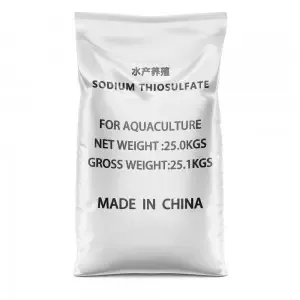



chemical formula of chlorine dioxide
The Chemical Formula of Chlorine Dioxide Understanding Its Structure and Applications
Chlorine dioxide, a versatile chemical compound, is widely recognized for its disinfectant properties and is utilized across various industries, including water treatment, food processing, and healthcare. Its unique chemical structure is denoted by the formula ClO2, which conceals an array of fascinating characteristics and practical applications.
Chemical Structure
The chemical formula ClO2 indicates that each molecule of chlorine dioxide is composed of one chlorine atom (Cl) and two oxygen atoms (O). Unlike chlorine gas (Cl2), which exists as a diatomic molecule, or other compounds like sodium chloride (NaCl), the structure of chlorine dioxide reveals its intriguing properties. The molecular geometry of ClO2 can be described as a bent shape, a result of the presence of two oxygen atoms bonded to the chlorine atom, and the lone pair of electrons on chlorine that repels the oxygen–chlorine bond angles.
Chlorine dioxide is a free radical, making it highly reactive. Its distinctive behavior in chemical reactions stems from its ability to act as a strong oxidizing agent. This property is vital in its role as a disinfectant and bleaching agent, where it effectively kills bacteria, viruses, and fungi, making it an essential tool in maintaining hygiene and safety.
Synthesis
Chlorine dioxide is typically generated through the reaction of sodium chlorite (NaClO2) with a strong acid, such as hydrochloric acid (HCl). The equation for this reaction can be simplified as follows
\[ \text{NaClO}_2 + \text{HCl} \rightarrow \text{ClO}_2 + \text{NaCl} + \text{H}_2\text{O} \]
This method illustrates how the controlled production of chlorine dioxide can yield a reliable source for disinfection. Alternatively, chlorine dioxide can be produced in situ, meaning it is created at the site of application, which further reduces the risks associated with handling and storing concentrated solutions.
chemical formula of chlorine dioxide

Applications
The applications of chlorine dioxide span a wide spectrum, primarily due to its effective antimicrobial properties. One of the most significant uses of chlorine dioxide is in water treatment. It is widely employed to disinfect drinking water, wastewater, and industrial water systems. Its ability to destroy bacteria, viruses (including rotavirus, a common foodborne pathogen), and protozoa, such as Giardia and Cryptosporidium, makes it particularly valuable in safeguarding public health.
In the food industry, chlorine dioxide is used as a sanitizing agent. It is applied in washing fruits, vegetables, and surfaces in food processing plants. The compound is effective against biofilm and other contaminants that are often difficult to eliminate with conventional sanitizers. Additionally, it is believed to leave no harmful residues, making it a safer alternative for food contact surfaces.
Chlorine dioxide has also found applications in the healthcare sector, where it is used to sterilize medical instruments and control infections in hospitals. The effectiveness of ClO2 against resistant bacterial strains and its ability to penetrate biofilms contribute to its growing popularity among healthcare professionals.
Moreover, chlorine dioxide is gaining attention for its role in deodorizing and odor control. Its oxidative properties allow it to break down odor-causing compounds, thereby providing a clean and fresh environment in various settings, including homes, offices, and industrial facilities.
Safety Considerations
Despite its numerous advantages, it is essential to consider safety when using chlorine dioxide. As a potent oxidizer, it can be hazardous if not handled correctly. Exposure to concentrated chlorine dioxide can result in respiratory irritation, skin burns, and other health effects. Hence, adequate protective measures, such as personal protective equipment and proper ventilation, should be employed during its production and application processes.
Conclusion
The chemical formula ClO2 represents far more than just a combination of chlorine and oxygen—it encapsulates a powerful compound with diverse applications and significant benefits. Whether it’s improving public health through water treatment, ensuring food safety, or facilitating sterilization in healthcare settings, chlorine dioxide continues to play an essential role in modern society. Its unique properties, coupled with advancements in safe handling methods, ensure that chlorine dioxide remains a vital asset in the ongoing quest for cleanliness and hygiene.
-
Why Sodium Persulfate Is Everywhere NowNewsJul.07,2025
-
Why Polyacrylamide Is in High DemandNewsJul.07,2025
-
Understanding Paint Chemicals and Their ApplicationsNewsJul.07,2025
-
Smart Use Of Mining ChemicalsNewsJul.07,2025
-
Practical Uses of Potassium MonopersulfateNewsJul.07,2025
-
Agrochemicals In Real FarmingNewsJul.07,2025
-
Sodium Chlorite Hot UsesNewsJul.01,2025










